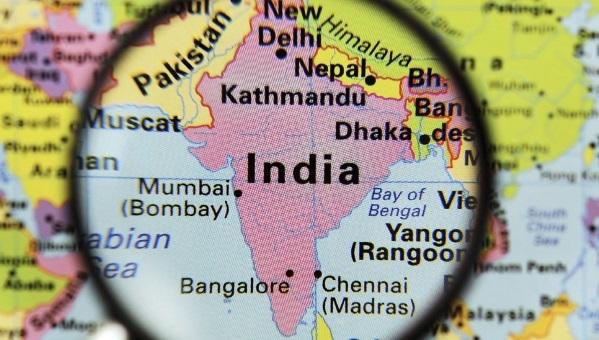
By Sarosh Bana
It was a drastic move against drastic problems.
The Indian government’s decision on 8 November to abruptly demonetise high-value currency aims at combating the twin menace of a crippling shadow economy and daunting terrorist financing that have been undermining the nation’s economy and security.
India’s parallel economy is estimated at a stupendous Rs30 trillion ($445.8 billion), amounting to a fifth of the Rs135.76 trillion ($2.02 trillion) GDP and surpassing the economies of countries like Thailand and Argentina!
The radical step, however, sucked 22 billion of the Rs500 ($7.4) and Rs1,000 ($14.9) denomination banknotes worth over Rs14 trillion ($208 billion) – a 10th of the country’s GDP – out of the economy, forcing those within the law to rush to the banks to trade these notes in for limited exchanges.
The Rs7.85 trillion ($117 billion) worth of the scrapped Rs500 notes and Rs6.33 trillion ($91 billion) worth of the Rs1,000 ones constituted an overwhelming 86 per cent of the value of Indian currency in circulation. Their combined volumes also accounted for a little over 24 per cent of the overall 90.3 billion banknotes of all denominations in circulation.
The suddenness of the exercise caused widespread chaos, with serpentine queues forming outside banks and ATMs that soon ran out of cash, touts offering to buy the junked notes at a price, supplies of food and essential commodities getting derailed, stockpiles of fruits and vegetables rotting away, jewellers and other luxury retailers accepting the old notes at a premium, and blanked household budgets leaving families in the lurch.
It even led to a spate of deaths, including that of two ailing newborns turned away from different hospital that refused old notes despite hospitals, chemists, and petrol, railway and bus stations being exempted from the situation for some days. Several aged persons collapsed and died whilst waiting in lines outside banks, while a housewife hanged herself after returning empty-handed from a bank. There were instances where shredded and burnt notes were found on roadsides, and workers are being offered their wages in cash for months in advance.
Despite this turbulence, most did not grudge this initiative of Prime Minister Narendra Modi, as they felt there was no alternative and the step had been long in coming in countering the country’s booming shadow economy and terror financing. The decision was no doubt aimed at those who had salted away their ill-gotten wealth in the now useless Rs500 and Rs1,000 denomination notes. This has rendered it virtually impossible for them to exchange all their cache or even depositing it in banks without inviting scrutiny from the taxman, even as no limit has been imposed on the amount of money that can be deposited in one’s bank account.
An earlier Income Disclosure Scheme (IDS) that from 1 June had provided a four-month window to tax dodgers to legitimise their concealed income by paying 45 per cent Income-Tax had drawn out but Rs65,250 crore ($9.7 billion) of black money from 64,275 declarants. They have until 31 December to pay their taxes, which, at 45 per cent, amount to Rs29,362 crore ($4.4 billion). Tax evaders identified after September 30 have been threatened with up to 35 per cent tax and 90 per cent fine, apart from a jail term extending to seven years.
A similar scheme last year permitting people to declare secret deposits in tax havens overseas fell far short of expectations, with fewer than 700 coming forward and paying Rs2,500 crore ($371 million) in taxes. The Central Bureau of Investigation (CBI) considers Indians to be the largest depositors in banks abroad for tax evasion, estimating $500 billion of corrupt money stashed by them in offshore tax havens. The Bureau deems the country’s economy to have been blighted immeasurably by this flow of capital to tax havens such as Mauritius, Switzerland, Liechtenstein, St Kitts, British Virgin Islands etc.
Indian money is vastly untraceable as most transactions are in cash. The country has one of the largest unbanked populations in the world, totalling 233 million, or 18 per cent, of the population of 1.3 billion. Credit card penetration too is poor, with only 24.5 million in operation, and the average number of card transactions per inhabitant is 6.7, among the lowest in the world. In comparison, Australia’s is 249.3, the UK’s, 201.7, Brazil’s, 54.8, and China’s, 14.4.
India’s ‘black economy’ – economic activities outside formal banking channels – is generated significantly from bribery that is rampant in the various arms of the federal, state and local governments. A high proportion of it is routed through gold, real estate, the film industry, the informal sector and businesses that flourish on cash transactions. Ambit Capital Research notes that while the incidence of black money in real estate has not been officially quantified, experts suggest that it funds about 30 per cent of the sector.
Many realtors in India are fronts for politicians or are patronised by them and the building industry, in turn, is a generous donor to political parties. As regards the country’s $122 billion jewellery industry, jewellers say that 80 per cent of their business is from rural customers, mainly in the agriculture sector, who lack the government-assigned permanent account numbers (PANs) that are used to check tax evasion. As farm income is not taxed in the country, such bank accounts are often made proxy for dispersing unaccounted wealth.
Black money manifests disturbingly in India, as in the glaring disparities in society. India’s financial capital Mumbai is home to 28 of the country’s 95 dollar billionaires and 45,000 of its 264,000 dollar millionaires. It is moreover the wealthiest city in the country, and 14th worldwide, with estimated wealth of $820 billion, accounting for 15 per cent of the total wealth of $5.6 trillion held in the country as of June 2016. Also residing in Mumbai is Reliance Industries chairman Mukesh Ambani, the richest Indian with a personal fortune of $22.7 billion who lives with his wife and three children, and staff of 600, in the most expensive house in the world, a 27-storey 48,780 square feet tower that cost $1 billion.
Yet, in the Palghar district just 110 km to the north, 254 children have in the last one year succumbed to malnutrition, apart from 195 foetal deaths caused by malnourished mothers. As much as 42 per cent of Mumbai’s population of 22 million lives in slums, while 18.78 million families across the country, 17 per cent of urban India, live in such squalor. Over 460 million survive below the poverty line, making the country home to a third of the world’s poor.
Modi also specified that the demonetisation would help clamp down on the use of hawala as also fake Indian currency notes for terror funding. Terrorist groups use hawala to reach funds to their cadres across the globe, hawala being the traditional mode of money transfer, the cash handed to an agent who then has an associate in the relevant country or area paying the intended recipient. It originated in West and South Asia in the 11th century for moving funds for long-distance trade. But the ease of transfer and the anonymity of the transactions soon made hawala the preferred route for illicit businesses and organised crime to convey, and launder, unaccounted money and funds for terrorists without alerting the authorities.
The demonetisation is also intended to flush out fake Indian currency from circulation. Much of this has been revealed by Indian investigation agencies to have been counterfeited and pushed into India by Pakistan to fund cross-border terrorism from its territory as also to undermine the Indian economy. While the face value of such bogus tender is estimated at Rs400 crore ($59.5 million), it is reckoned that a prodigious Rs70,000 crore ($10.4 billion) worth of such notes has entered India over the years, only a third of which could be traced by law enforcers.
These notes have largely been of Rs500 and Rs1,000 denomination and the Modi government believes its action will surely obliterate the racket, as production of smaller currency notes will pose logistical hurdles on account of the large volumes that would be required to be smuggled across the border.
The Prime Minister now warns of further measures against black money, following the demonetisation. In a public address he asked the audience, “You tell me, whether money that has been stolen should be exposed or not?” There was a resounding “Yes” from the audience.




